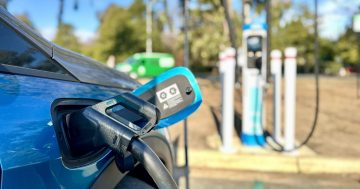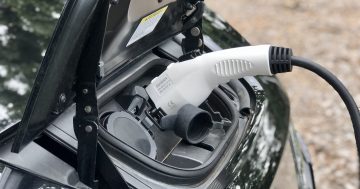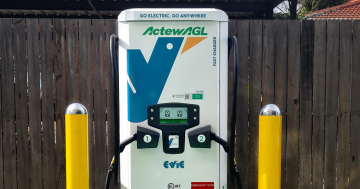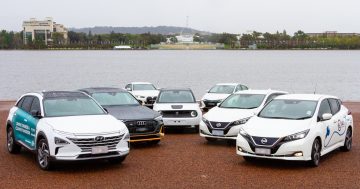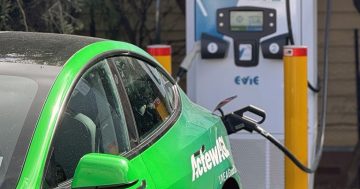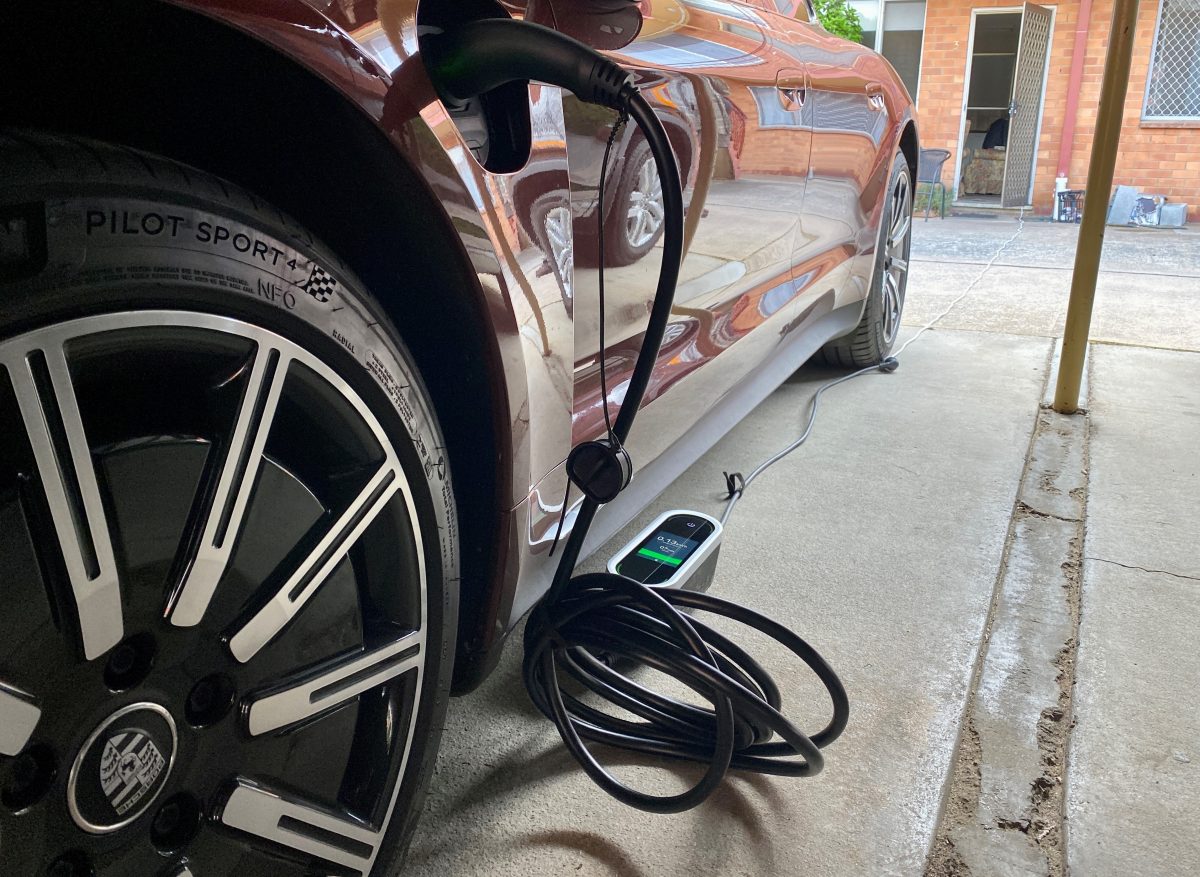
A Porsche Taycan 4S charging up. Photo: James Coleman.
Pulling up in the garage and plugging the electric vehicle (EV) in to charge for the night isn’t an option for everyone.
According to recent studies, as many as 70 to 90 per cent of EV owners charge up at home. But about 33 per cent of all dwellings in the ACT are either part of a multi-unit complex or semi-detached, and this number is only growing.
So chances are there isn’t a plug hanging up on the wall in these car parks.
And the thought of all these people running extension cables from their apartment down to their own private charger gives Alex Boundy the heebie-jeebies.
An electrician by trade, Alex now oversees Facilities Management across the ACT for Civium Property Group. He has spent the last 10 months deep diving into exactly what’s involved in getting EV chargers into more apartment car spots.
“It’s easy to say the juice isn’t worth the squeeze,” he says.
“Installing charging infrastructure is an intrinsically hard thing to do. But with my facility management hat on, I understand it really isn’t fair to dictate what kind of car people can and can not buy.”
The ACT Government commissioned a report into future charging needs last year. ‘EV Ready Developments’ by Australian consulting firm Urbis called for all parking spaces in new multi-unit residential developments to be fitted with the necessary infrastructure for slow charging.
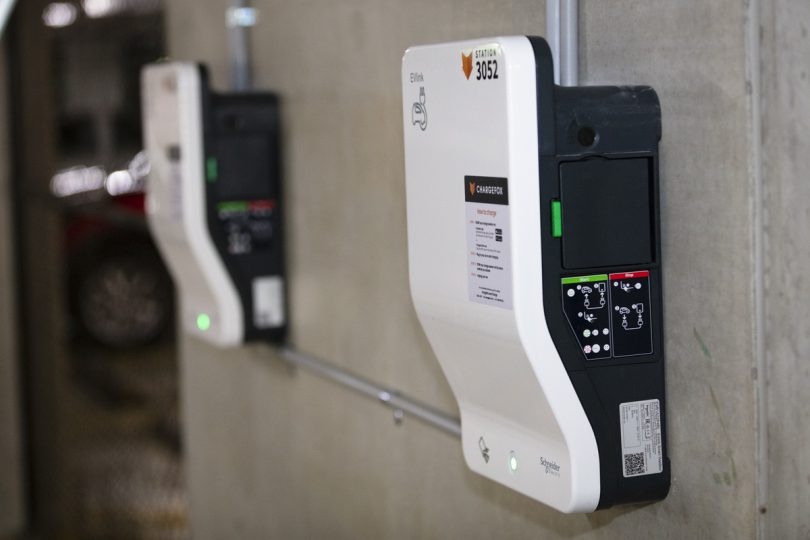
Charging points in private apartment car parks are few and far between. Photo: Thomas Lucroft.
Alex says the first hurdle to this is securing enough electricity.
“Drawing extra current also adds pressure to a street electricity grid that is already having to contend with gas going offline,” he says.
“For many urban dense areas, such as the Kingston Foreshore and parts of Woden, they’re already at a capacity.”
An electrician can install a proper set-up that runs off your personal meter box, but it costs between $3500 and $4800 – that’s provided there’s a column or wall on which to mount the charger.
Having a communal-type charger isn’t always a solution either. A lot of Canberra’s apartment complexes only have one allocated car spot for each unit.
Then there are the body corporates and owners’ corporations with which to deal.
“Many of them like to window shop without their wallet, so they often baulk at the quotes,” Alex says.
“It’s a grand expense, so it has to be taken to an AGM and the demographic in certain buildings are more reluctant. Getting everyone on board is going to be the biggest road block.”
Alex says the technology, logistics and appetite are in place – it’s just a matter of applying the right fix – and he has ideas.
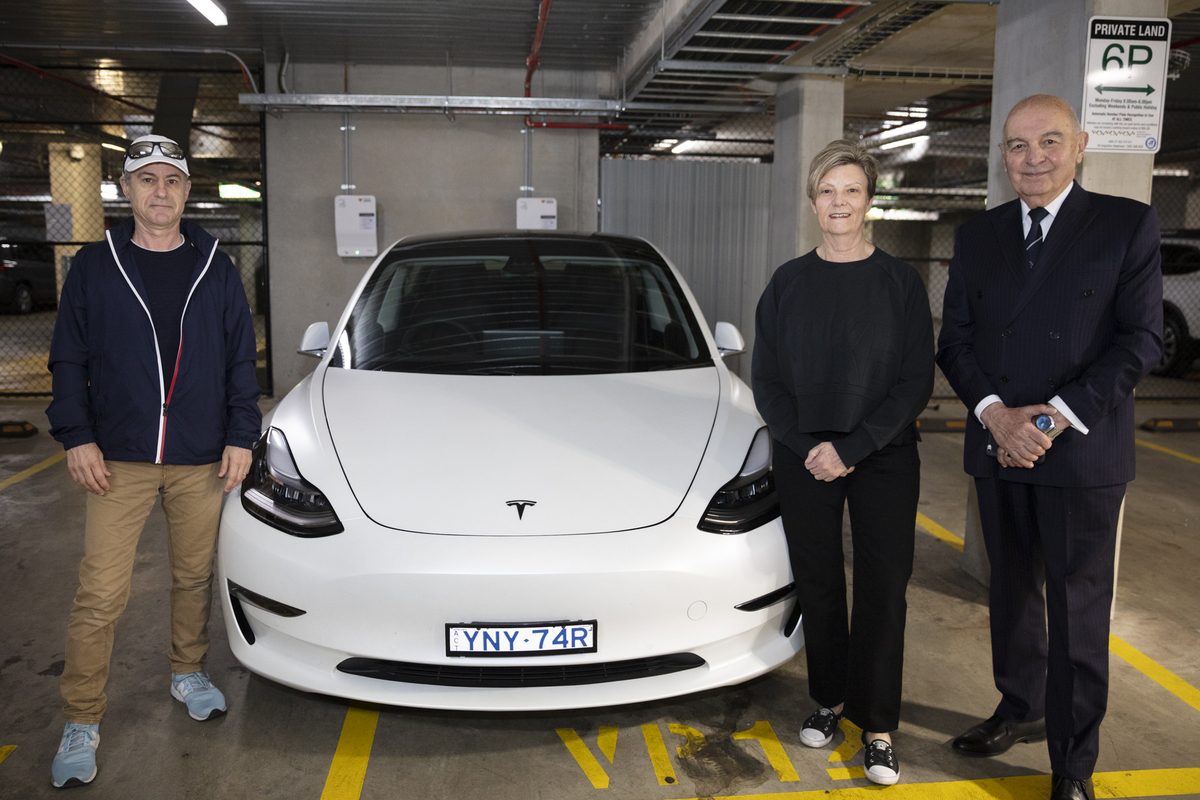
Residents at IQ Smart Apartments in Braddon with their electric vehicle chargers. Photo: Thomas Lucraft.
“Our approach is to do it in stages in line with the uptake of EVs. So for Stage 1, we could install eight chargers; for Stage 2, 16; and Stage 3, 24,” he says.
“Based on the current trajectory, we’ve kicked the can five to 10 years down the road.”
This ‘smart charge’ model also allows the chargers to talk to each other and share the power between them. This means they aren’t all drawing a massive amount of power at once from the building’s grid.
“No matter how many cars are plugged in along the line, the chargers will ensure every car has at least 50 km of range by the following morning,” Alex says.
The expense remains high but Alex says there is return on investment.
“If you’re renting out your unit and it has the capability to charge, you’ve just differentiated your property from the rest of the market, and that’s a value add every day of the year.”
The Urbis report also suggested a charger in the car space increased capital value per square metre by between $250 and $4500, while rent could be increased by $10 to $130.
Civium’s most recent upgrade gave a development 16 charge points across 180 car parks. But Alex says the team – with local building developers – is looking to take things to the next level.
“The appetite is definitely there and we’re ready to go.”













